
Atopic dermatitis isn't just dry skin. It's a persistent, frustrating cycle: itch, scratch, rash, repeat. And no matter how hard you scrub or how many creams you try, it keeps coming back. The truth? Most flares aren't random. They're triggered by things you can control - and the most powerful tool to stop them isn't a steroid cream. It's something far simpler: emollient therapy.
What Really Causes Atopic Dermatitis Flares?
Atopic dermatitis, often called eczema, starts with a broken skin barrier. In people with this condition, the skin doesn't hold onto moisture the way it should. This isn't just about being dry - it's about the skin's natural defense system failing. A genetic flaw in the filaggrin protein, found in up to half of moderate-to-severe cases, means the skin can't form a strong protective layer. That lets water escape and irritants sneak in. The result? Inflammation, intense itching, and visible rashes.Triggers aren't the same for everyone, but some are almost universal. Cold, dry air - especially when humidity drops below 40% - increases flare risk by 37%, according to Mayo Clinic data. Heat is just as bad. When temperatures hit 80°F (27°C) or higher, sweat irritates the skin in 68% of patients, turning a mild itch into a full-blown outbreak.
Common household products are major offenders. Sodium lauryl sulfate, found in many soaps and shampoos at concentrations as low as 0.5%, strips away the skin's natural oils. Fragrances - even "natural" ones - trigger flares in 15% of users. Preservatives like methylisothiazolinone cause contact dermatitis in nearly 6% of emollient users. Even laundry detergents and fabric softeners can be culprits if they're not fragrance-free and dye-free.
Stress, sweat, dust mites, and pet dander also play roles. But here's the key point: these triggers don't cause atopic dermatitis. They just wake it up. Without a broken skin barrier, most of these wouldn't matter. That's why fixing the barrier is the first step - and often the only step needed for mild cases.
Why Emollients Are the Foundation of Treatment
Emollients aren't just moisturizers. They're medical-grade skin repair tools. While topical steroids reduce inflammation, emollients fix the root problem: the leaky skin barrier. They work in three ways: occlusion, hydration, and restoration.Occlusive agents like petrolatum (Vaseline) form a physical seal on the skin, reducing water loss by up to 98%. Humectants like glycerin pull moisture from the air into the skin - at concentrations of 40-50%, they're most effective. Emollients like ceramides actually rebuild the skin's natural lipid structure. Ceramides make up 50% of the skin's barrier, and in atopic dermatitis, they're often missing. Replacing them at concentrations of 0.5-3% helps restore function.
Studies show emollients reduce transepidermal water loss (TEWL) by 25-50%. That means less dryness, less itching, and fewer flares. Unlike steroids, emollients have an incredible safety profile. Only 2.3% of users report side effects, compared to 15-20% for topical corticosteroids. That’s why the American Academy of Dermatology and the National Eczema Association both list emollients as the #1 first-line treatment.
But here’s the catch: emollients alone clear up only 30-40% of mild cases. For better results, they’re used with other treatments. In fact, when combined with steroids, clearance rates jump to 70-80%. Emollients don’t replace other therapies - they make them work better.
How to Apply Emollients the Right Way
Applying emollient isn’t just slathering on cream. It’s a technique. Do it wrong, and you waste time and money. Do it right, and you can cut flares by a third in just six months.The golden rule: apply within 3 minutes of getting out of the bath or shower. Wet skin absorbs moisture 50% better than dry skin. A lukewarm (not hot) 15-20 minute soak softens the skin, then pat dry - don’t rub. Immediately apply emollient in smooth, downward strokes. Rubbing upward can irritate the skin and trigger itching.
Use enough. Most people use too little. The American Academy of Dermatology recommends 250-500 grams per week for adults - that’s about a shot glass full every day. For kids, it’s 500-1000 grams. That’s not a luxury. It’s a medical necessity. Patients who use over 100 grams per week have 43% fewer flares than those using less than 50 grams.
Choose fragrance-free, preservative-minimized products. Look for ceramide-containing formulas. CeraVe, Eucerin, and Cetaphil dominate the market because they meet these standards. But don’t overlook plain petrolatum. It’s cheap, effective, and works for severe flares. Reddit users with eczema report Vaseline as the most reliable option for nighttime use.
Apply in sections. Use 2-3 finger units (the amount from the first to second knuckle) for each body part - one arm, one leg, the chest, etc. This ensures even coverage without overuse.
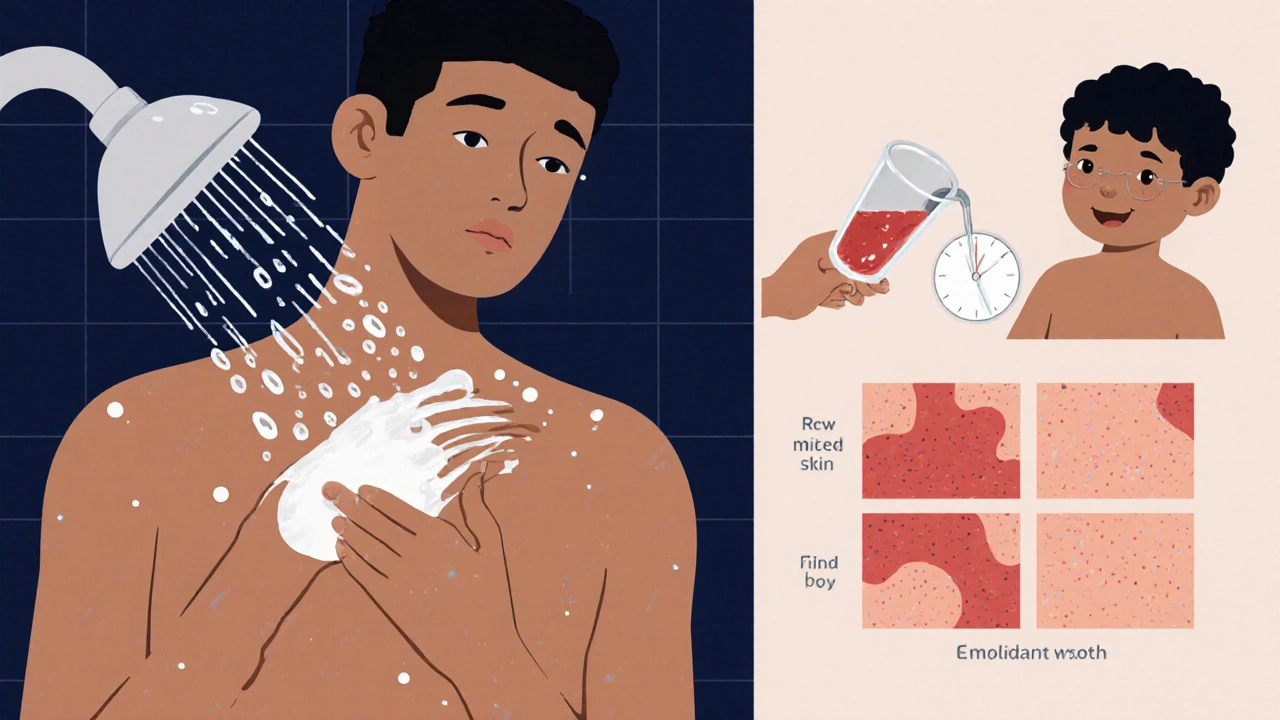
Why So Many People Stop Using Emollients
The biggest problem with emollient therapy isn’t that it doesn’t work. It’s that people quit using it.Studies show only 35% of patients stick with daily emollient use after six months. Why? Two big reasons: texture and time.
Many emollients feel greasy, sticky, or heavy. Urea-based products can leave a tacky residue. Ceramide creams often cost $18 or more per tube - a barrier for families on a budget. Petrolatum is cheap ($8), but some find it too thick. That’s why fragrance-free, lightweight lotions are preferred by 78% of users on Reddit’s eczema community.
Time is another killer. Life gets busy. For many, applying emollient twice a day feels like another chore. A National Eczema Association survey found 67% of patients cite time constraints as the main reason they skip applications. Only 22% manage consistent twice-daily use.
The solution? Make it part of your routine. Apply after morning brushing and before bedtime. Keep tubes in the bathroom, bedroom, and car. Use pump bottles for easier dispensing. If a product feels unbearable, try another. There are hundreds of options - find one that doesn’t feel like a burden.
When Emollients Aren’t Enough
Emollients are the foundation - but not the whole house. For moderate-to-severe cases, they need backup.If you’re still having flares despite daily emollient use, you likely need anti-inflammatory treatment. Topical corticosteroids are the most common next step. For sensitive areas like the face, eyelids, or genitals, topical calcineurin inhibitors like tacrolimus (Protopic) are safer alternatives.
For severe, persistent cases, biologics like dupilumab (Dupixent) can reduce flares by 70-80%. These are injectable medications that target the immune system. But they’re expensive and require a doctor’s prescription. Emollients are still used alongside them - because even with advanced treatments, the skin barrier must be maintained.
There’s also emerging research on "emollient resistance." In 8-12% of severe cases, Staphylococcus aureus bacteria colonize the skin and resist normal barrier repair. These patients need antibacterial washes or short courses of antibiotics in addition to emollients.
And while early studies suggested daily emollient use from birth could prevent eczema, newer data from the Lancet shows it only reduces incidence by 11.1% in high-risk infants. Prevention isn’t guaranteed - but consistent use still helps manage symptoms once they start.
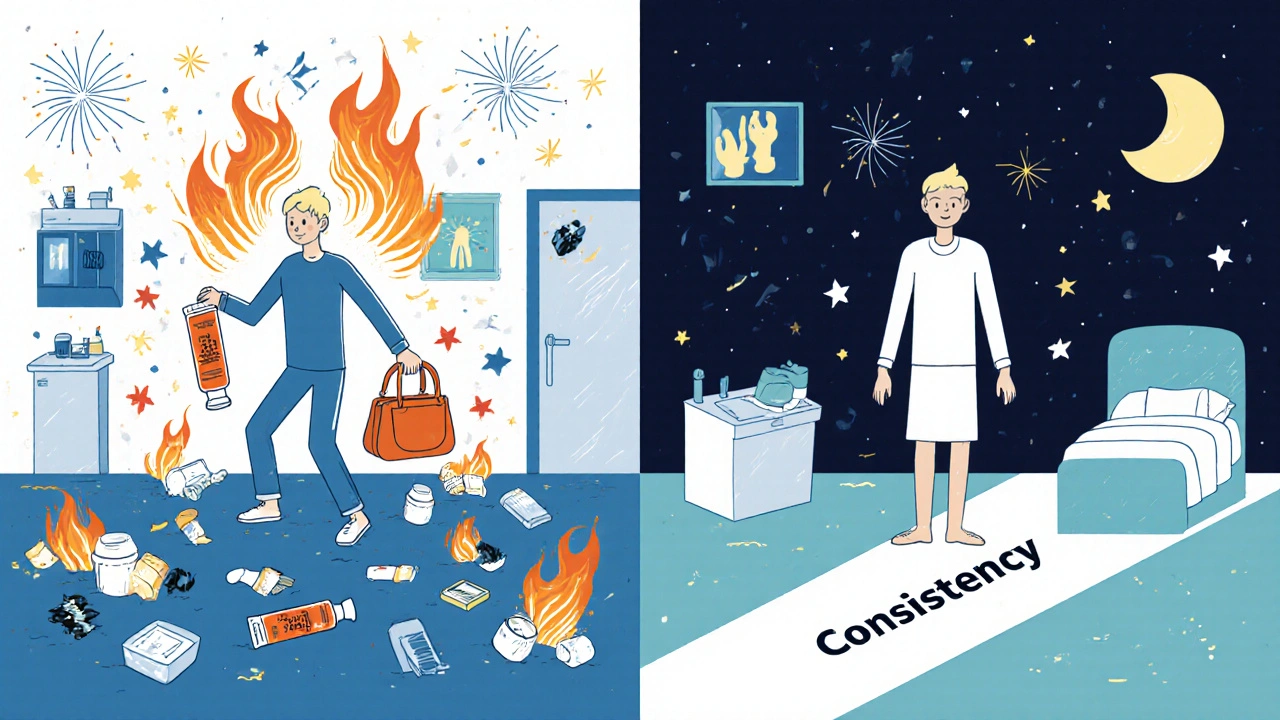
What’s Next for Emollient Therapy
The field is evolving. In May 2023, the FDA approved the first emollient with sustained-release ceramides - Ceramella MD. It reduces water loss by 63% for 12 hours, compared to 38% with standard formulas. That means fewer applications and longer protection.Researchers are also exploring microbiome-targeted emollients. The skin’s bacterial balance plays a role in flare frequency. New products in Phase 2 trials aim to encourage good bacteria and suppress Staphylococcus aureus.
Even smart technology is entering the space. Pilot programs at Massachusetts General Hospital are testing emollient dispensers that track usage and send reminders to patients’ phones. These could be game-changers for adherence.
But the core hasn’t changed. No matter how advanced the next product becomes, the rule stays the same: repair the barrier, reduce triggers, and apply consistently. Emollient therapy isn’t glamorous. But for millions with atopic dermatitis, it’s the difference between constant discomfort and manageable days.
Real Talk: What Works for Real People
A 7-year-old reduced flares from 18 per year to just 3 by using CeraVe twice daily after baths. Another patient switched from a thick, expensive cream to plain petrolatum at night - and stopped waking up scratching. A woman in her 40s started keeping a tube in her purse. She applied it before meetings, before driving, after washing hands - and noticed her hands stopped cracking.Success stories aren’t about miracle cures. They’re about consistency. They’re about choosing a product you don’t hate. They’re about applying it even when you’re tired.
Failure? That’s usually not the product. It’s the expectation. People think emollients should feel like magic. They don’t. They feel like work. But that work pays off - in fewer flares, less itching, and better sleep.
Can I use regular lotion for atopic dermatitis?
Most regular lotions contain fragrances, alcohol, or harsh preservatives that can irritate atopic dermatitis skin. Look for products labeled "fragrance-free," "hypoallergenic," and "ceramide-enriched." Over-the-counter brands like CeraVe, Eucerin, and Cetaphil are formulated specifically for sensitive skin and are clinically tested for safety in eczema.
How often should I apply emollient?
Apply at least twice daily - after bathing and before bed. For severe dryness or flares, apply more often, even 3-4 times a day. The key is consistency. Studies show patients who apply emollients twice daily reduce flares by 36% over six months. Waiting until the skin feels dry means you’re already behind.
Is petroleum jelly better than expensive ceramide creams?
Petroleum jelly (petrolatum) is one of the most effective occlusive agents available. It’s cheaper, widely available, and blocks water loss better than most creams. For severe dryness or nighttime use, it’s often the best choice. Ceramide creams are better for long-term barrier repair because they replace missing skin lipids. Many people use both: petrolatum at night, a ceramide lotion during the day.
Do I need to stop using soap completely?
No - but you need to choose wisely. Avoid soaps with sodium lauryl sulfate, fragrances, or dyes. Use a gentle, fragrance-free cleanser like Cetaphil Gentle Skin Cleanser or CeraVe Hydrating Cleanser. Limit full-body washing to every other day. Rinse thoroughly and apply emollient within 3 minutes after washing.
Can emollients cure atopic dermatitis?
No - atopic dermatitis is a chronic condition with no known cure. But emollients can control it effectively. They reduce flare frequency, lessen severity, and improve quality of life. When used consistently, many people go weeks or months without flares. Think of emollients as daily maintenance, like brushing your teeth - not a cure, but essential for long-term health.
What to Do If Emollients Aren’t Working
If you’ve been using emollients correctly for 4-6 weeks and still have frequent flares, it’s time to talk to your dermatologist. You may need:- A short course of topical corticosteroids or calcineurin inhibitors
- A bleach bath regimen (half a cup of bleach in a full tub, twice a week) to reduce bacteria
- Testing for allergies or environmental triggers
- Discussion of biologic therapy if your case is severe
Don’t give up. Atopic dermatitis is frustrating, but it’s manageable. The most successful patients aren’t the ones with the most expensive products. They’re the ones who stick with the basics - and apply them every single day.

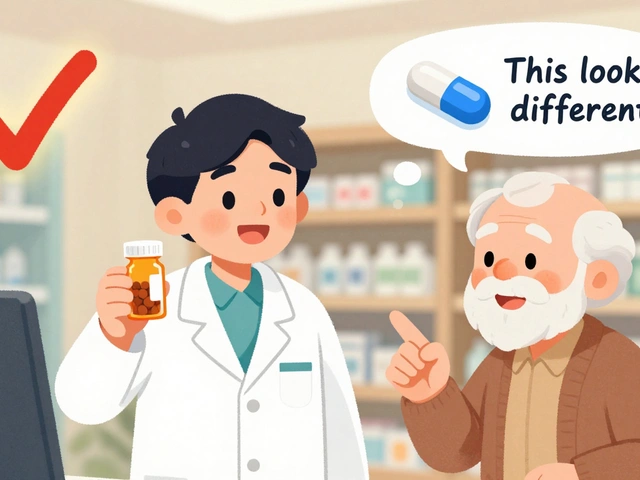

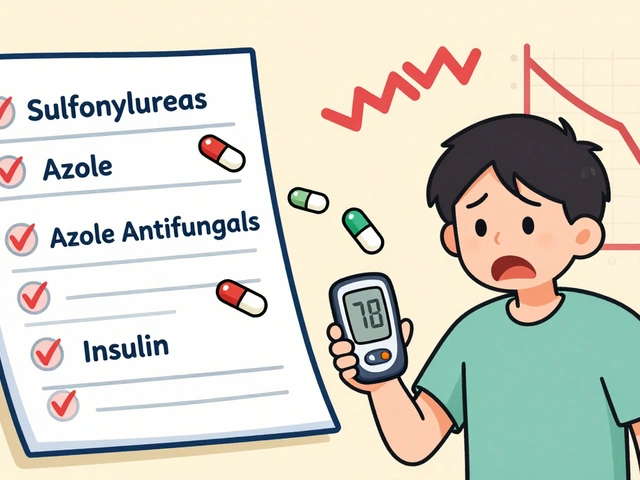

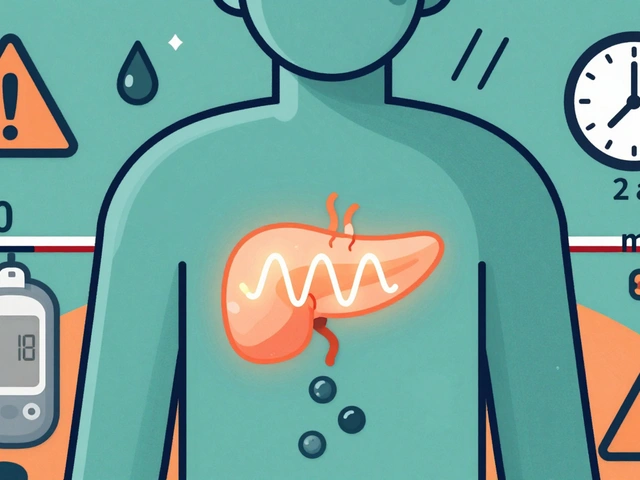
8 Comments
Just switched to CeraVe and my flares dropped by like 70% in 3 weeks
Stop using that fancy lotion with lavender scent
It’s not magic it’s just consistency
Apply after shower like they said and you’ll be fine
Thank you for this comprehensive breakdown. I appreciate the evidence-based approach and the emphasis on barrier repair over symptom suppression. Many patients are unaware that emollients are not merely cosmetic but constitute a foundational medical intervention. The data on transepidermal water loss and ceramide replacement is particularly compelling. Consistency remains the most underappreciated factor in successful management.
Been using Vaseline every night for 2 years now 🙌
My skin doesn't crack anymore
And I don't wake up with bloody arms
Also cheap as hell
Why pay $25 for a jar that feels like glue?
USA doctors always overcomplicate everything
My cousin in Delhi just uses coconut oil and gets better
Why do you need 50 dollar creams when nature gave us oil
Western medicine is a scam
Emollients are just fancy moisturizers
Stop buying into corporate lies
Of course you’re using the wrong product. If you’re still flaring after six weeks, you didn’t read the article properly. You’re probably applying it wrong. You think this is a skincare routine? It’s a clinical protocol. You need to measure the amount. You need to use finger units. You need to stop using soap entirely. And no, your ‘natural’ brand from Whole Foods isn’t going to cut it. You’re doing it wrong.
They don't want you to know this but emollients are controlled by Big Pharma
They make billions off steroids
That's why they push the expensive creams
And why the FDA approved that 'Ceramella MD' thing
It's a trap
Petrolatum is the truth
They don't profit from Vaseline
They profit from your confusion
From a dermatological immunology standpoint, the ceramide deficiency in AD is a well-documented endophenotype of filaggrin mutations. The restoration of lamellar body secretion via exogenous ceramide supplementation modulates the TLR2/4 pathway, thereby reducing IL-31 and TSLP upregulation. The 2023 FDA-approved sustained-release formulation demonstrates improved pharmacokinetic profiles with reduced application frequency - a critical adherence enhancer. However, the microbiome modulation angle remains underexplored in clinical practice.
I tried everything. Even that fancy new Ceramella stuff. Nothing worked.
Then I stopped using all products.
Just let my skin breathe.
And guess what?
It got worse.
Now I know.
They lied to us.
It’s not the skin.
It’s the water.
Fluoride in the tap water.
That’s what’s causing it.
Buy a filter.
That’s the real answer.
They don’t want you to know.
They’re selling you creams to keep you dependent.
Water is the enemy.
And you’re drinking it.